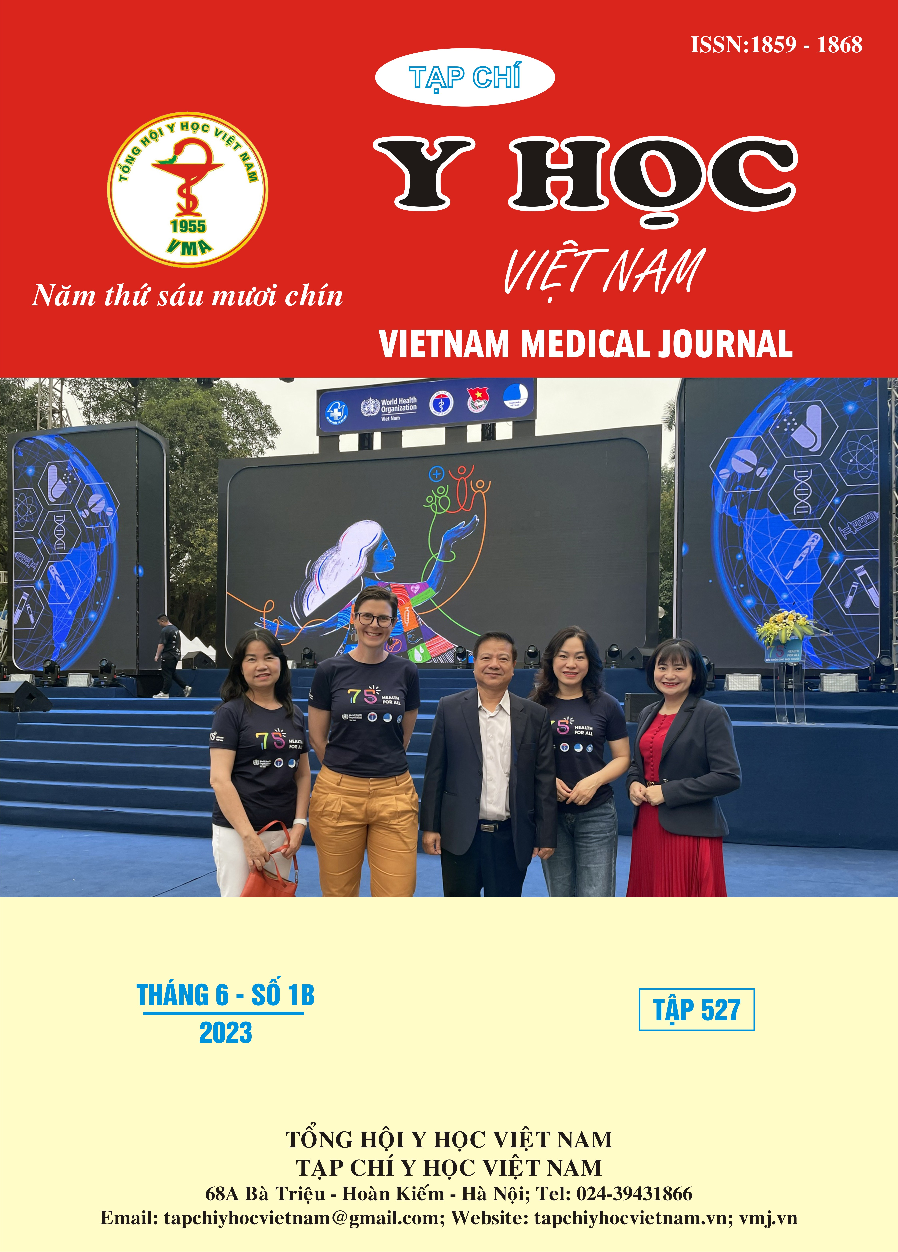STUDYING ON ANTIBIOTIC RESISTANCE AND RELATED FACTORS OF STAPHYLOCOCCUS AUREUS ISOLATED FROM PATIENTS TREATED AT CAN THO CITY GENERAL HOSPITAL 2022-2023
Main Article Content
Abstract
Background: Staphylococcus aureus is one of the leading causes of community-acquired and hospital-acquired infections, leading to serious consequences. Objectives: Determine the rate and extent of antibiotic resistance of Staphylococcus aureus. Analysis of factors related to the antibiotic resistance rate of Staphylococcus aureus. Material and method: A cross-sectional descriptive study on 58 clinical specimens isolated from Staphylococcus aureus. Perform antibiogram test to determine the antibiotic resistance of bacterial strains to commonly used antibiotics on culture machines and automatic antibiograms. Result: The rate of Staphylococcus aureus resistant to penicillin was 95.8%, Erythromycin was 90.8% and Clindamycin was 89.5%. The rate of Staphylococcus aureus sensitive to Linezolid was 100%, Tigecycline was 100%, Nitrofurantoin was 100%, Vancomycin was 97.9%, Quinupristin/Dalopristin was 97.8%, and Rifampin was 93.7 %. The rate of MRSA was 82.1%. The rate of multi-antibiotic-resistant Staphylococcus aureus was 92.6%. MRSA had a 7.6 times higher risk of multi-antibiotic resistance than other S. aureus strains with ORs (CI95%): 7.6 (1.54-38.43) and p=0.018. The relationship between the source of bacteria and the medical history with the rate of multi-resistant S. aureus has not been recorded. Conclusion: Staphylococcus aureus was resistant to Methicillin and was highly resistant to antibiotics, but this bacterium was still highly sensitive to topical antibiotics. MRSA increases the risk of multiple antibiotic resistance.
Article Details
Keywords
Staphylococcus aureus, MRSA, multi-antibiotic resistance.
References
2. Bộ Y tế (2017), “Hướng dẫn lựa chọn kháng thử nghiệm và phiên giải kết quả kháng sinh đồ”, Hướng dẫn thực hành kỹ thuật xét nghiệm vi sinh lâm sàng, Quyết định số 1539/QĐ-BYT ngày 20/04/2017 của Bộ trưởng Bộ Y tế, tr.214-231.
3. Nguyễn Minh Châu (2020), Tình hình nhiễm và sự đề kháng kháng sinh của Staphylococcus aureus tại Bệnh viện Đa khoa Trung ương Cần Thơ năm 2019-2020, Tạp chí Y Dược học Cần Thơ, 33, tr.172-179.
4. Nguyễn Đình Duy (2017), Viêm phổi cộng đồng do MRSA, Hội nghị đề kháng kháng sinh trong viêm phổi cộng đồng và viêm phổi bệnh viện lần 4, tr. 68.
5. Trần Đỗ Hùng, Nguyễn Thị Hải Yến (2019), Vi sinh y học, Nhà xuất bản y học, Hà Nội.
6. Cao Minh Nga (2008), Sự kháng thuốc của vi khuẩn gây bệnh thường gặp tại bệnh viện Thống Nhất trong năm 2006, Tạp chí Y Học 12, tr.1-8.
7. Trần Thị Thanh Nga, Trương Thiên Phú và cộng sự (2017), Đặc điểm vi khuẩn và đề kháng kháng sinh trong viêm phổi bệnh viện – viêm phổi thở máy tại Bệnh viện Chợ rẫy 2015-2016, Hội nghị đề kháng kháng sinh trong viêm phổi cộng đồng và viêm phổi bệnh viện lần 4, tr.20.
8. Lạc Thiên Như, Cao Hữu Nghĩa (2012), Khảo sát sự đề kháng kháng sinh của Staphylococcus aureus tại viện Pasteur thành phố Hồ Chí Minh từ tháng 5-7/2012, Công nghệ sinh học, Kỹ thuật công nghệ TP.HCM.
9. WHO (2018), GLASS report: early implementation 2016-2017, Global Antimicrobial Resistance Surveillance System.


